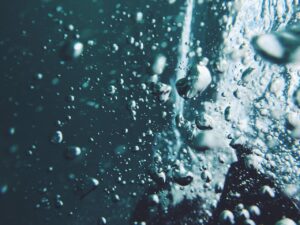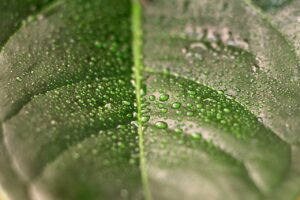By En Qi Teo, Staff Researcher & Writer at Save The Water™ | February 17, 2021
Our need for clean water constantly sparks new innovations, and researchers have even found that it is possible to extract water from air. This may sound like a fantasy, but in fact, there are various ways that we can now do this. In 2018, scientists at Virginia Tech found that we can use fine mesh to get water from fog. The design was inspired by nature. The scientists modeled their design after California redwood trees, which use their needle-like leaves to extract water from fog. Fog harps are currently being tested in other weather conditions.
In the same year, researchers from the University of California, Berkeley, and the King Abdulaziz City of Science and Technology collaborated to design material that extracts water from dry desert air. Their device uses a fan powered by solar equipment that blows air over the material. Their experiments found that each kilogram of the material can extract 0.1 liters of water in the desert. Massachusetts Institute of Technology scientists have developed a similar machine.
However, all of these innovations need to be powered by energy. Last year, academics at the National University of Singapore and the University of Toronto discovered an aerogel that can produce water from the air without the use of any electricity at all.
How Does the Aerogel Work?
The aerogel is made by combining a hydroactive polymer—a material made from very large molecules that alternate between attracting and repelling smaller water molecules—and a metal-organic framework, a type of polymer that is especially absorbent. The aerogel, which looks like a sponge, absorbs water vapor from the surrounding air and condenses it. This produces water pure enough to drink.
What Are the Benefits of the Aerogel?
The most obvious benefit of aerogel is that it does not require electricity to work. This means that even areas that lack access to electricity would be able to use this aerogel to get clean water to drink. Furthermore, the cost to purchase the aerogel is incurred only once, so using aerogel may be more feasible than distributing electricity-powered materials to low-income families.
In a tropical environment with high humidity, like in Singapore, it has been shown that the material can produce 17 times its own weight in water in a day. Researchers have tested the water and found that it is safe for consumption. Health experts recommend that men consume approximately three liters of water per day, and that women consume a little over 2 liters. This means that one kilogram of this aerogel can satisfy the drinking water needs of a household of 6 people!
What Are the Next Steps?
The researchers are looking for ways to allow this technology to be adopted at a wider scale. In particular, they are looking for collaborators who have the equipment or expertise to mass-produce this material such that it can be sold to households. This aerogel may also appeal to those who do outdoors activities like camping, or to athletes who do endurance sports and need safe drinking water on the go. Hopefully, in the near future, we will see this product available to all.






